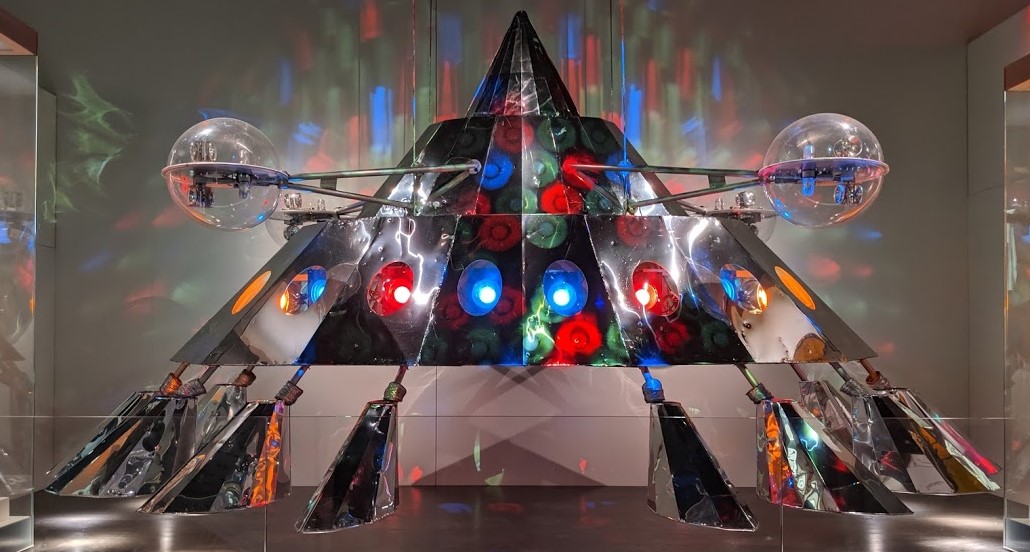|
I went to DC a few weeks ago and visited the National Museum of African American History and Culture. It is an excellent pair of museums, I strongly recommend anyone visiting DC make it a priority. It’s still free and still a hot ticket but easier to get in to than before. If you’re going in summer reserve tickets three months in advance for your best experience. But you can also get same-day tickets and walkups, particularly outside of peak season. The museum is clearly designed as two separate sections. Downstairs is history, upstairs is culture. The bottom half of the museum is a fantastic history of African Americans from the earliest days of slavery, through slave uprisings, emancipation, Jim Crow, and the Civil Rights era. It’s ambitious. It will leave you exhausted at the end with no energy for the other half of the museum, the cultural museum. Which is also fantastic, a celebration of African American cultures. Food, textiles, sports, music, TV. I mean, they have the goddamn P-Funk mothership! It’s a lot of fun. Definitely also worth a visit, but plan a break for lunch or something in the middle. I approached this museum from the background of having visited a lot of German museums about Nazi history. I was wondering how the Smithsonian would deal with America’s enormous crime against humanity. Thoroughly and honestly, but very differently from the German museums. The Nazi memorials tend to a direct documentation of how the genocide and other crimes were conducted. They are focussed on a recent history in living memory, and one that is meticulously documented in precise bureaucratic detail. By contrast formal American slavery is 150+ years old and there’s precious few direct records of, say, individual slaveholders and their daily abuses. The historical distance demands a different telling. Also the Smithsonian has made a decision to tell as uplifting a history as possible; in every room details of African American resistance, strength, and heroism are highlighted. I think that’s admirable but it doesn’t leave a lot of room for documenting the horrible abuses. Those are documented, but only as one facet of the whole museum. So I was a little conflicted. Honestly I think America needs a fully uncomfortable museum about slavery where the abuses are the focus. How American people and government worked to subjugate other Americans, to keep them and their children in slavery. Far too many people still think that slavery wasn’t really that bad, or wasn’t really Americans’ faults, or that slavery is over so what’s the big deal now? The German museums exist to ensure that no German can be at all confused about what happened in the Nazi regime and could never consider even slightly lionizing that era. Plenty of Americans still celebrate Confederate "heroes" and do not admit to the horrible abuses of slavery, not just in its time but the echoes of it today. I fear in softening the message the Smithsonian does not do enough to communicate how horrible American slavery was. There are a couple of museums that are more focussed on the mechanisms of abuse which I need to visit; the Whitney Plantation near New Orleans and the Lynching Memorial in Montgomery. One other thing I can’t let go… Nazi memorials in Germany are in no way museums of Jewish culture. They are museums of German history. The Smithsonian has chosen to put museums of both Culture and History together in one place. I think they’ve done an excellent job of it. The separation of floors makes for a separation of concerns. And I like the uplifting message in the history section, the story of how African Americans shall overcome. So the combination works, but it still makes me uneasy. I’m reading The Planet Remade: How Geoengineering Could Change the World. It’s by an Economist journalist, a book about the taboo topic of engineering our way out of global warming. It starts with two questions. Do you think global warming is a real threat? Do you think reducing CO2 emissions to near zero is very hard? If you answer "yes" to both, then maybe you’re open to an alternate solution to climate change: geoengineering. Active measures to combat global warming other than just telling everyone they have to stop using energy. Some of these methods seem plausible and inexpensive and worth discussing. One example idea is stratospheric aerosol injection. You fly planes or balloons regularly up to 60,000 feet or so and spray sulfur dioxide. There it turns into various gasses that reflect sunlight, replicating more or less what volcanoes already do naturally. Estimates are it’d cost $2B–$8B per year to completely counteract global warming, a small amount of money. The intervention is temporary, the sulfurous particles don’t last forever. That’s a good thing in that if something goes catastrophically wrong it’s not permanent. Also a bad thing in that it’s an annual cost that has to be maintained. Note the cost and technique is simple enough any individual country could choose to do this unlaterally, at any time. There’s other possible techniques for geoengineering. Chemical carbon capture, planting enormous forests, orbital sun shades, … But the topic is nearly taboo in environmental circles; a recent UN meeting failed to get consensus to even decide to discuss the idea further. If you believe global warming is a threat to humanity and that our current efforts to stop CO2 emissions are failing, it seems worth thinking about alternatives. Even if you don’t like the idea of geoengineering it’s worth studying in case some other country decides to just do it on their own. Me, I like the idea. Because I’m a technocrat. I want to believe science and engineering can solve any problem. Also because it doesn’t require demanding that the 50%+ of the world that’s not yet industrialized goes years more without cheap power because we’re mad they’ll put as much carbon in the air as the rich countries already have. The risks are obvious and enormous. But they are also hopefully manageable and the risk is absolutely worth it if it saves our planet.  |
||

